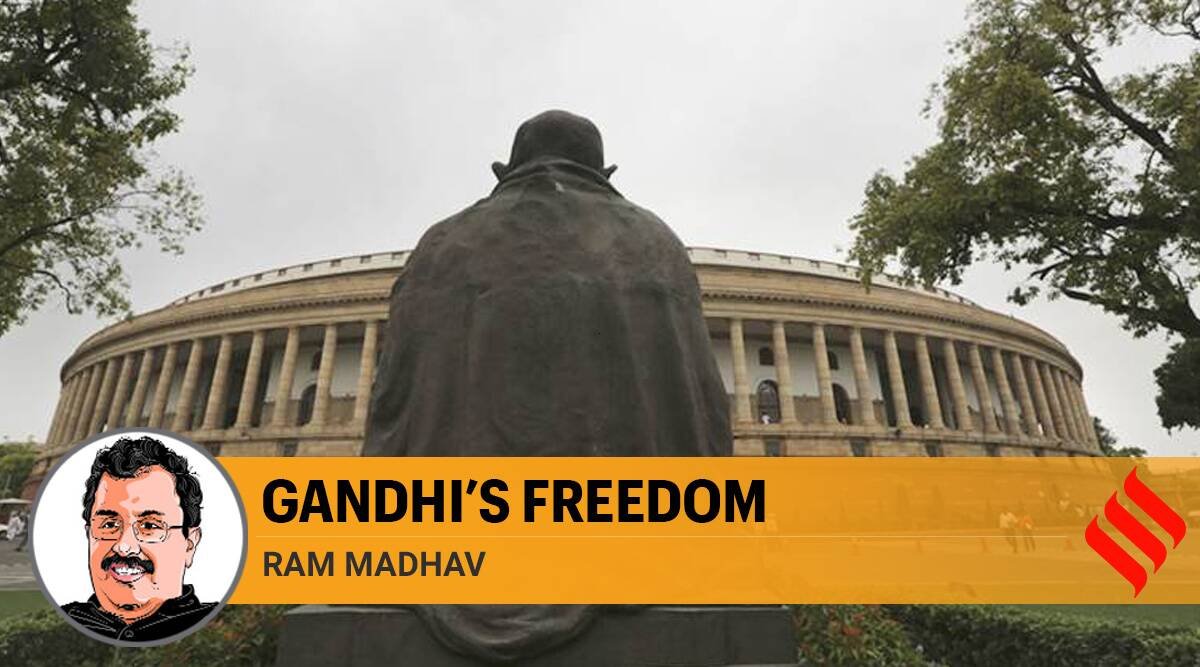
|
Getting your Trinity Audio player ready...
|
On January 30, 1948, the flag of the United Nations Organisation was lowered to half-mast. For the first time, the UN had set aside a day’s session to honour the man just murdered in Delhi. “Not the head of a state, a general or a king, but a lone man who without an army, riches, or political alliances, has been called the most powerful man of the 20th century. Who was this man that all the world should mourn over?” — Encyclopedia Britannica’s documentary on Gandhi begins with this description. Gandhi’s greatness is universal. For Gandhians, he is an eternal inspiration. Gandhi never hated anybody, but some Gandhians do. Incidentally, for those whom Gandhians hate, too, Gandhi is iconic. For, Gandhi fits into all shapes and sizes. His legacy can be appropriated by anyone. As is famously said of leaders, Gandhi too can be “loved or hated but not ignored”.
Gandhi had optimistically predicted that he could be killed but not his Gandhism. Seventy-two years after his death, Gandhism remains, but it is largely about externals. Cleanliness, khadi, cow protection and swadeshi became chic in Gandhi’s name. Gandhi emerged as a “trendy fashion icon”. These are not unimportant. But Gandhism is much more than these externals.
Gandhi’s core message was about freedom, which Tagore described in his poem as “where the mind is without fear”. Enlightenment thinkers emphasised on human freedom from the material standpoint. Gandhi gave this a spiritual dimension. From South Africa to India, Gandhi relentlessly fought for freedom and equality. He aligned freedom with responsibility and equality with dignity and love. “I am not interested in freeing India from merely English yoke. I am bent on freeing India from any yoke whatsoever”, Gandhi declared. Biographer Louis Fischer quipped that the Englishman who pushed Gandhi out of the railway carriage in South Africa didn’t realise that in a few decades, the same fragile man would push the English Raj out of India.
Nat Turner, the African American slave-preacher too was born on October 2 in 1800. Turner was the first to rebel against slavery in America. His rebellion was crushed and he was hanged. Like Gandhi, Turner too trod the spiritual path like a mystic. He too was austere in his lifestyle and fasted and prayed regularly. Like Gandhi, he also believed that his mission was divine.
Gandhi carried forward Turner’s mantle in South Africa, fighting against apartheid. Later, in India, he led the struggle against the British rule on the one hand and against social evils on the other. He described the movement for swaraj as one of “self-purification”.
Gandhism lies in the commitment to freedom and self-purification. Dictators thrive on yokes like brute state power, a pliant media and incessant propaganda. Gandhi respected his critics. But dictators can’t stand dissent. They live in their cocoons, surrounded by henchmen and yes-men. That has been the story, from Hitler to Stalin. Once the Third Reich was formed in 1933, Hitler declared that the party had no more role in the government. He surrounded himself with “experts”. Leaders who came before him were erased from the historic memory. Stalin undertook the “Great Purge”, eliminating his competitors and rivals in the party starting with the killing of Sergei Kirov in 1934 and ending with the killing of Leon Trotsky in 1940. In all these campaigns, both Hitler and Stalin depended on state power and a submissive media.
Gandhi was the antithesis of such dictatorial tendencies. Gandhi lived an open life, never surrounded by a coterie. He was fearless in truth. He rushed to Noakhali when riots broke out in early 1947 in which a large number of Hindus were killed. For four months, he went from village to village persuading Muslims to embrace their Hindu neighbours. He admonished Huseyn Suhrawardy, the Bengal Premier, for his inaction. But then, he refused to accept the chief minister’s version about the communal situation in Bihar and rushed to Patna to offer succour to Muslims who were victimised by Hindus. He admonished the Congress government in equally harsh words for its failure.
That’s what Gandhi called Ram Rajya or Dharma Rajya — a state of righteous freedom. Deen Dayal Upadhyay later explained Dharma Rajya in the terms of democracy. Democracy is understood as the government “by the people, of the people and for the people”. While “by the people” and “of the people” represented elections and government, “for the people” meant Dharma Rajya, Deen Dayal averred. Rama Rajya, for Gandhi, meant people being free from every type of yoke.
Gandhi’s saga inspired many. Authoritarian regimes fell in many countries after India. The last to fall in the last century was the Soviet Union. The Soviet regime’s anthem used to describe the country as the “indestructible union of free republics”. Those republics were barely free under the Soviet regime. The myth of indestructibility remained only until Mikhail Gorbachev became the President in 1986. All that was needed for the indestructibility to go was his policy of Glasnost — openness. The Kazakhs were the first to take to the streets in 1986. Gorbachev used brute military power, but the movement for freedom spread like a wildfire, destroying one of the last surviving dictatorships of the 20th century. Horrific details of the accident at the Chernobyl nuclear power plant were carried by the recently “freed” Russian media far and wide, further precipitating the downfall.
There is a growing democracy deficit in the world today. People’s freedoms are at stake. The Gandhian agenda was always about more openness, freedom and a life of dignity and respect. A benevolent state and a free media are mandatory for people’s freedom. “I will be gone saying what I am saying, but one-day people will remember that what this poor man said, that alone was true”, Gandhi pleaded once. Realising that Gandhi was right is real Gandhism.
(The article was published in Indian Express on October 2, 2020. Views expressed are personal.)



